Your comprehensive guide on locating, purchasing, and using the best grow soil for cannabis plants in 2022.
Table of Contents
- 1.Cannabis Plant Cycle
- 2.Step 1: Germination
- 3.Step 2: Seedling Phase
- 4.Step 3: Vegetative stage
- 5.Final phase: Flowering
- 6.FAQS
- 7.What do cannabis plants need to thrive?
- 8.How do they receive nutrients?
- 9.When to start and stop fertilizing?
- 10.When do I stop watering weed plants?
- 11.How long does cannabis grow?
- 12.Macro Nutrient
- 13.Nitrogen
- 14.Phosphorus
- 15.Potassium
- 16.Micro Nutrient
- 17.Magnesium
- 18.Manganese
- 19.Boron
- 20.Calcium
- 21.Sulfur
- 22.Soil for Cannabis Growers
- 23.What is good cannabis soil?
- 24.Indoor Growing
- 25.Outdoor Growing
- 26.Composting
- 27.CO2 and pH balancing tips
- 28.What should I know about Cannabis seeds?
- 29.Regular
- 30.Feminized
- 31.Autoflowering
- 32.Photoperiodic
- 33.5 Best Soil Brands for Marijuana Plants
- 34.Can I Use Compost Tea for Growing Cannabis in the Best Soil?
- 35.Cannabis grower tips
- 36.Cannabis Leaf Signs
- 37.In Conclusion
Cannabis Plant Cycle
Cannabis has four main stages of plant growth. Understanding which cannabis nutrients and how much to provide during each step is essential.
Step 1: Germination
The seed germination life stage can last anywhere from three to ten days. You’ll initially want to place your seeds in a dark place that is warm and humid.
Once the marijuana seeds open and produce their first root, transfer them into small grow pots.
Step 2: Seedling Phase
Once you have cannabis seedlings, it should take approximately two to three weeks to complete this essential phase.
You’ll notice serrated leaflet production, followed by larger, bladed fan leaves. Fully developed weed plants have five to seven blades per leaf.
Step 3: Vegetative stage
Next, your marijuana plants will enter the three to sixteen weeks, known as the vegetative stage. During the vegetative growth period, the plants will need at least sixteen hours of light or six hours of direct sunlight with several more hours of indirect sunlight.
You’ll need to provide essential nutrients, water, and maintenance during most of the vegetative phase.
Final phase: Flowering
Finally, the flowering stage lasts eight to twelve weeks and is the final step to producing buds. The plants need to be on a rotating light cycle of twelve hours of sun and twelve hours of dark during the flowering season.
If you nurture cannabis plants, they should begin to produce large, resinous buds.
FAQS
Here, we answer the most frequently asked questions regarding weed plant nutrients and fertilizer.
What do cannabis plants need to thrive?
Cannabis plants need various nutrients and absorb them from the soil. With high-quality soil, the proper amounts of light and water, and a steady climate, cannabis can grow well, but fertilizer and nutrients will help them thrive and grow stronger.
How do they receive nutrients?
Cannabis plants require certain essential elements to develop into healthy plants with juicy flowers. Sunlight gives them the energy to carry out photosynthesis, which is how plants utilize water, sunlight, CO2, and nutrients to grow.
The stomata absorb carbon dioxide, combine water in the plant cell’s chloroplasts, and convert it to marijuana plant food (glucose). Oxygen is then provided from the water soaked up through the root system, which is why poor drainage can harm otherwise good soil.
Many vitamins and minerals are carried by water and distributed around the plant to support healthy growth. Cannabis plants require vast amounts of macronutrients like potassium, nitrogen, and phosphorus and smaller quantities of micronutrients such as iron, copper, and zinc.
Plant roots take in nutrient-rich water, flowing throughout indoor and outdoor plants. Plant roots are made of complex cells called sclerenchyma cells. Micronutrients and macronutrients are distributed by water throughout each type of cell that performs its essential functions.
When to start and stop fertilizing?
Once your marijuana plants have grown at least three sets of leaves, you can begin to add organic fertilizers to provide slow-release chemical nutrients to the garden soil. After flushing your weed plants, fertilization will end two weeks before harvest.
When do I stop watering weed plants?
For the best crop yield, most experienced in cannabis cultivation say that you should stop watering your plants approximately three days before you’re ready to harvest. Others stop a week before preparing to harvest buds of the same strain.
The idea is to send the marijuana plants into drought mode. This controlled hydric stress will cause the entire plant to direct its resources to reproduction, resulting in larger, denser buds.
How long to stop watering before harvest time is ultimately up to you and unique to your cannabis plant and situation. The ideal time differs for bigger plants, and most climates also vary. Overall, somewhere between three days and one week seems to be the consensus.
How long does cannabis grow?
It can take nine weeks to eight months to grow your marijuana plant. The growth stage for the plant depends on whether you are growing weed indoors or outdoors.
Indoor space allows cannabis growers to harvest after a few weeks or months, but growing outdoors depends on natural weather and annual cycles.
Macro Nutrient
Three main macronutrients assist in plant growth: Nitrogen (N), Phosphorus (P), and Potassium (K)
Nitrogen
Nitrogen increases growth during the vegetative stage. Nitrogen has an atomic number of 7 and an atomic mass of approximately 14.
Phosphorus
Promotes nutrient uptake and photosynthesis. Phosphorus has an atomic number of 15 and an approximate atomic mass of 31.
Potassium
It provides energy and builds plant endurance. Potassium has an atomic number of 19 and an atomic mass of approximately 39.
Micro Nutrient
There are five primary micronutrients that you’ll need when growing cannabis: Magnesium, Manganese, Boron, Calcium, and Sulphur.
Magnesium
Increases the absorption of light. It has an atomic number of 12 and an approximate mass of 24.
Manganese
Regulates chlorophyll to assist in the photosynthesis process. It has an atomic number of 25 and a mass of approximately 55.
Boron
It helps the plant to absorb calcium. It has an atomic number of 5 and a mass of 11.
Calcium
Increases cellular growth. Calcium has an atomic number of 20 and a mass of approximately 40.
Sulfur
Promotes the production of hormones and vitamins. Sulfur has an atomic number of 16 and a mass of 32.
Soil for Cannabis Growers
Soil has been an excellent option as a growing medium for centuries. When you grow cannabis, choosing the soil that will allow the plant to breathe, grow, and absorb the most nutrients possible is essential.
Read on for our top five picks for marijuana soil mix.
What is good cannabis soil?
Cannabis is the type of plant that can thrive in diverse conditions, changing vastly from strain to strain and seed to seed.
Although your weed plants can grow in various soils, it still needs a good balance of certain variables.
These variables include:
- Proper drainage
- Correct Soil pH and Soil Structure
- Good water retention
- Right macro and micronutrients ratio
- The appropriate balance of fungi to bacteria
Indoor Growing
Organic Potting Mix
For indoor growing, selecting a pre-mixed organic soil mix that offers natural nutrients and fertilizer can be best. Read on to find our top choices for organic potting mix.
Sphagnum Peat Moss
Peat Moss can be an excellent addition to your soil mix when growing indoors. It offers nutrients that will typically be scarce in indoor growing situations. Mixing this with compost will make for super healthy, rich soil.
Outdoor Growing
Sandy Soil
Sandy soils are coarse with good water drainage but poor water retention. Nutrients in sandy soil wash away quickly when watered compared to traditional potting soil, providing airy soil and high oxygen levels. However, sandier soil is easy to grow and is a viable option for novice cannabis growers.
Loamy Soil
Loamy soil is a mixture of sand, silt, and clay soils with organic nutrients. It is one of the best organic soil types for growing cannabis because it allows optimal water retention, drainage, nutrients, and oxygen. While there are many beneficial microbes, loamy soil is the most expensive option for growers that want good garden soil.
Clay Soil
Clay soils consist of many fine minerals. This soil is dense and not the easiest to grow cannabis with. Clay soil is nutrient and minerals-rich, making it an excellent option to include in organic growth. Clay soil offers good water retention but poor drainage.
Composting
Compost can be added to plants from kitchen waste and other organic materials and produce healthy, fertile soil. As well as helping your cannabis plant grow strong, composting reduces your environmental thumbprint.
Compost can come from leftover food and waste, chicken manure, worm castings, and bone meal. After expanding your compost and regularly stirring it, it will take approximately three months to become functional.
You can also create a compost tea with organic molasses, compost, and water. It usually takes around three days (maybe sooner if using earthworm castings) to make and needs to be used within two days.
CO2 and pH balancing tips
PH levels can significantly affect a grower’s plant success and yield size using soil, soilless or hydro methods.
- Your pH levels at the plant root significantly affect how well your marijuana absorbs nutrients and minerals and how readily they are available.
- Monitoring pH levels should be part of your weekly plant maintenance routine, especially for hydro cultivations.
- When adjusting pH, it would be best to make adjustments slowly and gently to avoid large fluctuations that can cause stress to the plants.
Adding Carbon Dioxide to your grow room has many benefits, including a faster-growing, more robust plant that will produce larger yields. With carbon dioxide, the rate of photosynthesis will be at a maximum, meaning they can produce carbohydrates much more quickly.
Cannabis likes slightly acidic soil. The ideal pH is 6, but it can also thrive on either side at 5.8 and 6.3.
What should I know about Cannabis seeds?
Each type of cannabis seed is unique. You’ll want to know which ones you purchase before planting them in your cannabis garden to ensure they receive the correct fertilizers and nutrients during their entire life cycle.
Regular
Regular seeds are completely organic and pure. These cannabis seeds give you a 50/50 chance at either gendered plant. For example, if you plant six seeds, you’re likely to determine sex as three males and three females out of the six plants.
Feminized
Feminized seeds taken from a seed bank are extracted from treated cannabis plants and will only produce female seeds. Feminized seeds are an excellent way to ensure you grow marijuana that will form resinous buds.
Autoflowering
Autoflowering seeds produce flowering plants around two to four weeks of growth. There’s no need to be concerned with the specific growth cycles or all the nutrients required to grow a photoperiod plant with these seeds.
These are great for beginner growers who don’t know much about growing marijuana.
Photoperiodic
Photoperiod strains are the old-school weed strains your parents smoked and are best grown outdoors. When cultivating photoperiodic weed, follow the natural rhythm of the climate, seasons, and sunlight, and you’ll be on the right track.
5 Best Soil Brands for Marijuana Plants
Finding the best potting soil for your raised beds, garden beds, and indoor or outdoor plants can be challenging, especially for those new to cannabis cultivation. Below, we have included five of our top pre-mixed soil options.
- Fox Farm Happy Frog Potting Soil
- Aurora Innovations Roots Organics Formula 707
- Coast of Maine Stonington Blend
- Roots Organics Original Potting Soil
- Nature’s Living Soil Organic Super Soil
Can I Use Compost Tea for Growing Cannabis in the Best Soil?
Yes, you can use compost tea for marijuana growing in the best soil. Compost tea for marijuana is a natural and organic way to fertilize your plants while also promoting healthy soil ecosystems. It can help improve the overall health and yield of your cannabis plants.
Cannabis grower tips
- Keep your growing lowkey. The fewer people that know, the more discreet your operation can remain.
- Avoid over and under-watering. Manage water quality and pH.
- Choose high-quality marijuana fertilizers and avoid giving too many nutrients.
- Follow the plant’s growth cycle. Every detail matters during growth.
- Choose suitable soil for cannabis growth.
- Pick top-quality seeds and a strain you’ll love.
- A poor climate without proper ventilation, lighting, and airflow will result in an unhealthy plant.
- Maintain an excellent infrastructure for growing cannabis.
- Don’t harvest too soon. Wait until the buds are fully formed and flowering is complete.
- Store your weed in an air-tight container for the best results.
Cannabis Leaf Signs
Several cannabis leaf symptoms can tell you what is wrong with your plant, including:
Underwatering– weed leaves will be limp and appear to hang; growth will slow; water more frequently or increase volume and utilize advanced nutrients until they bounce back.
Overwatering– leaves will curl down and appear rigid; they will show signs of being overly full of water, leading to root rot. Check the soil for dryness before watering to correct this issue.
Nutrient burn means you are overfeeding the plants; leaves will be brown and crispy, beginning at the tips and moving inward.
Light burn– if your grow lights are too close to the plant, your plants will turn yellow and then become brown and die. It’s best to raise your led grow lights if you notice yellowing during bud growth.
In Conclusion
When you need soil for your marijuana plants, selecting the right one is crucial. Learning to choose the proper organic nutrients is the first step to growing the best marijuana plants.
For example, planting cannabis in the soil will have different requirements than developing plants hydroponically.
If you’re serious about home growing, check out our comprehensive weed-growing guide for more information and helpful tips on choosing good cannabis soil.

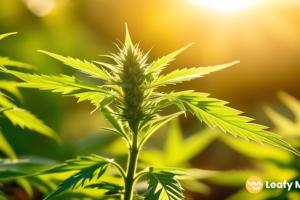
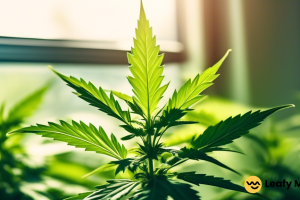





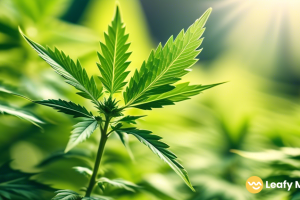
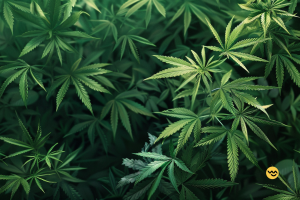
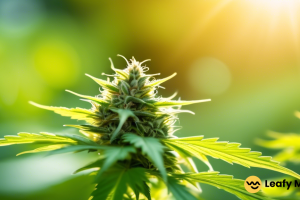
Leave a Reply